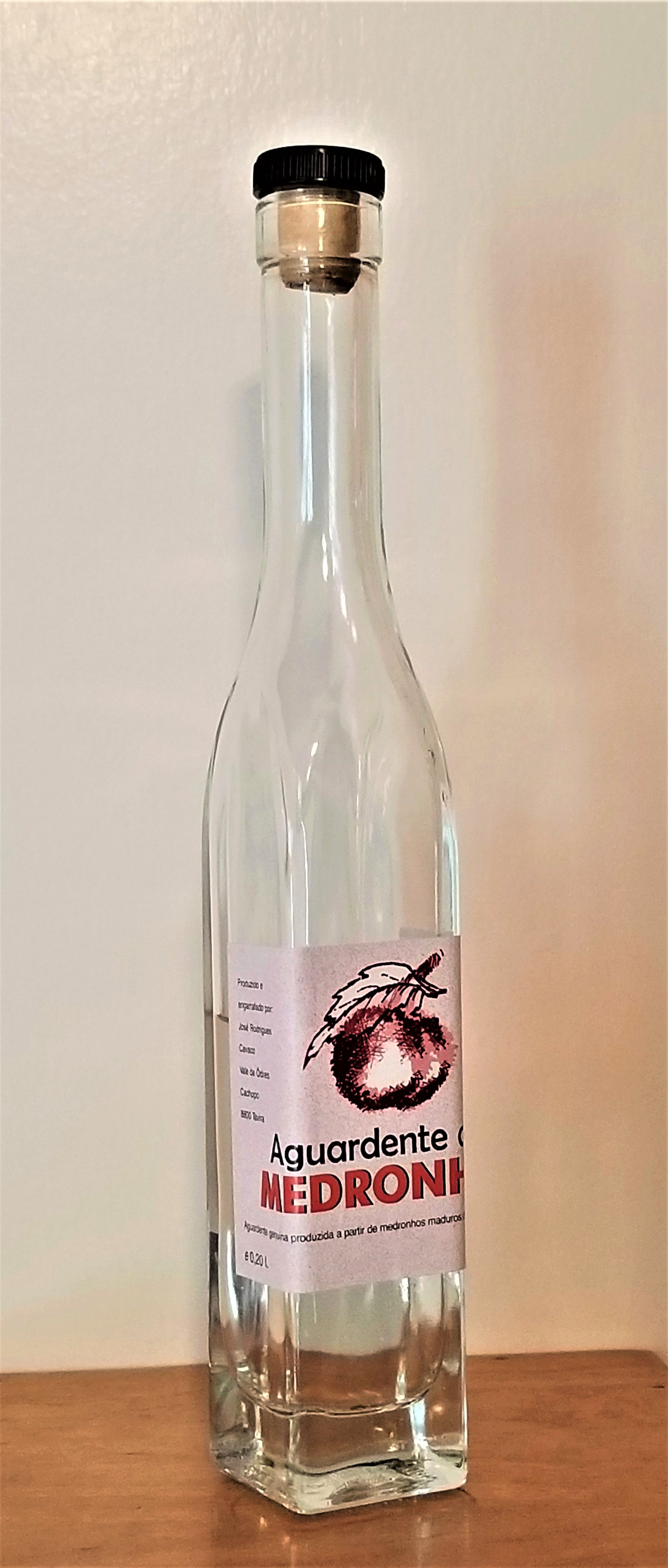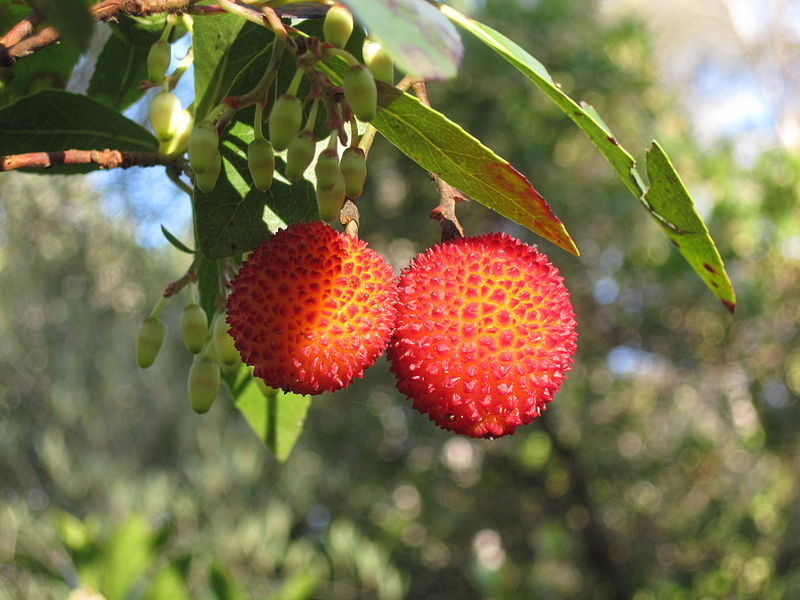
Grove Koger
One of the souvenirs that Maggie and I brought home from our 2017 visit to Portugal is this slim bottle of medronho, a fiery fruit brandy that we bought in an open-air market one evening along the Gilão River in Tavira.

Known occasionally by the fulsome name aguardente de medronhos, the spirit is distilled from the fruit of the strawberry tree, Arbutus unedo. The tree is relatively small and thrives in the rocky soil of the Alentejo and the Algarve, although it can be found as far north as Ireland. Its fruits are about 3/4 of an inch in diameter and resemble round strawberries. They’re harvested late in the year, and the distillation process continues well into the next. Medronho isn’t commonly produced commercially. Instead, most is distilled in small batches by the farmers on whose land the trees grow, and while the practice is technically illegal, it’s regarded as an important tradition worth preserving. The process typically lasts 30 to 60 days, after which the brandy may be aged in barrels for several years.
The word aguardente, by the way, is derived from the Portuguese phrase água ardente, or “burning water.” As medronho generally comes in at just under 100 proof, it deserves the name!
While staying in Tavira, Maggie and I were lucky enough to run across a large exhibit celebrating the Mediterranean Diet, which, in this instance, isn’t so much a regimen of particular foods as a way of life involving agriculture, fishing, food preparation and consumption, and the various customs and festivities surrounding the cycle. Although it doesn’t lie on the Mediterranean, the Algarve shares numerous foodways with the countries and regions that do, and this fact was recognized by UNESCO in 2013. The production and consumption of medronho are perfect examples of what the Mediterranean Diet represents.
□□□
In general character, medronho resembles the famous Balkan plum brandy slivovitz, although I find it a little gentler. I’ll be writing about that spirit another day.
The photograph of arbutus fruit is from Wikimedia Commons and was taken by Bj. Schoenmakers.
Grove, Thanks for this interesting and informative article. One might assume the “burning water” should be consumed while sitting down. 🙂 The fruits are very attractive. I was curious why the farmer’s distilling their own fruit from their own trees is considered illegal.
LikeLike